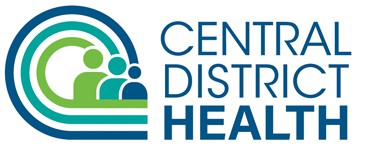As part of a voluntary water testing program, school officials recently detected elevated lead levels (>15 parts per billion (ppb)) in some drinking water samples at Fairmont Junior High. As Boise School District continues to test other schools, there may be additional public announcements about elevated water lead levels in fountains or faucets. Parents may have questions about the risk to their children’s health, or about the need for blood lead testing. As CDC case studies have demonstrated, exposure to a water source with elevated lead levels does not necessitate blood lead testing (CDC, 2004; 2010; 2012; 2016). Lead levels in Boise’s drinking water are not elevated so lead is typically from the fixture or plumbing components.
Fairmont Junior High Results
The elevated lead levels at Fairmont Junior High were found in “first draw” water samples, which are taken after the water stands in the plumbing for at least 6 hours. These first draw results represent the likely highest concentration of lead from each drinking water fountain or faucet sampled. After receipt of results, the water fountains with elevated lead levels were shut off and many have been replaced. Since the water source itself does not contain detectable lead, it is always a good practice to let water run for 30 seconds after it has been sitting overnight. Lead levels in “flush” water samples had undetectable lead levels in 2017. The elevated lead results will be published on Boise School District’s website.
Blood Lead Testing Considerations
Children six years of age and under are at highest risk for lead exposure. More information about lead screening is available at https://www.pehsu.net/_Library/facts/medical-mgmnt-childhood-lead exposure-June-2013.pdf. In
Idaho the children most at-risk for elevated blood lead levels include:
- recent immigrants (prior lead exposure outside the U.S.)
- very low income families
- those using traditional remedies or cosmetics
- those with parents exposed to lead at work or from hobbies
- those who participate in hobbies with lead exposure (ex. at indoor firing range)
Prevention
Lead-based paint and lead contaminated dust are the most common sources of lead for young children. Homes built before 1978 have a high potential of having lead-based paint. More information is available here: https://www.cdc.gov/nceh/lead/tips.htm
It is possible to reduce exposure to lead in drinking water by flushing pipes before drinking, only consuming cold water and testing for lead. Information is available here: https://www.deq.idaho.gov/water-quality/drinking-water/pws-monitoring-reporting/contaminants/lead/
For more information, contact Central District Health Department at 208-327-8625 during regular business hours.
References
CDC, 2004. Centers for Disease Control and Prevention. Blood Lead Levels in Residents of Homes with Elevated Lead in Tap Water — District of Columbia, 2004. April 2, 2004 / 53(12);268-270. Accessed online 8/2/2016 from: https://www.cdc.gov/mmwr/preview/mmwrhtml/mm5312a6.htm
CDC, 2010. Centers for Disease Control and Prevention. Notice to Readers: Examining the Effect of Previously Missing Blood Lead Surveillance Data on Results Reported in MMWR. May 21, 2010/ 59(19);592. Accessed online 8/2/2016 from: https://www.cdc.gov/mmwr/preview/mmwrhtml/mm5919a4.htm
CDC, 2012. Centers for Disease Control and Prevention. Lead in Drinking Water and Human Blood Lead Levels in the United States. May 10, 2012 Sup/ 61. Accessed online 8/2/2016 from: http://www.cdc.gov/mmwr/pdf/other/su6104.pdf
CDC, 2016. Centers for Disease Control and Prevention. Blood Lead Levels Among Children Aged <6 Years — Flint, Michigan, 2013–2016. Accessed online 8/2/2016 from: http://www.cdc.gov/mmwr/volumes/65/wr/mm6525e1.htm

